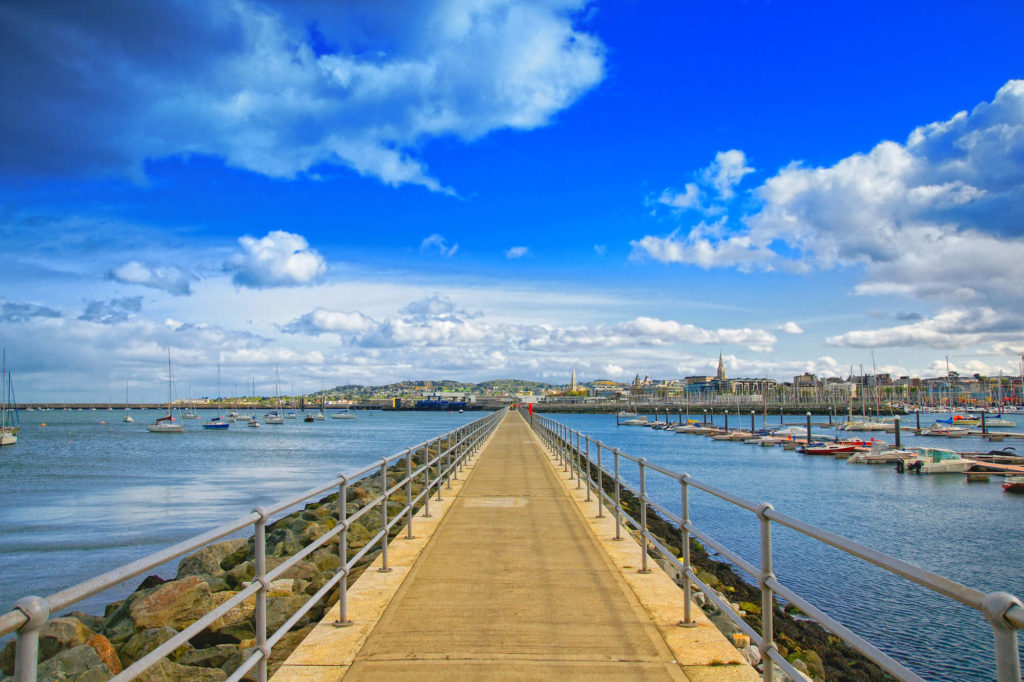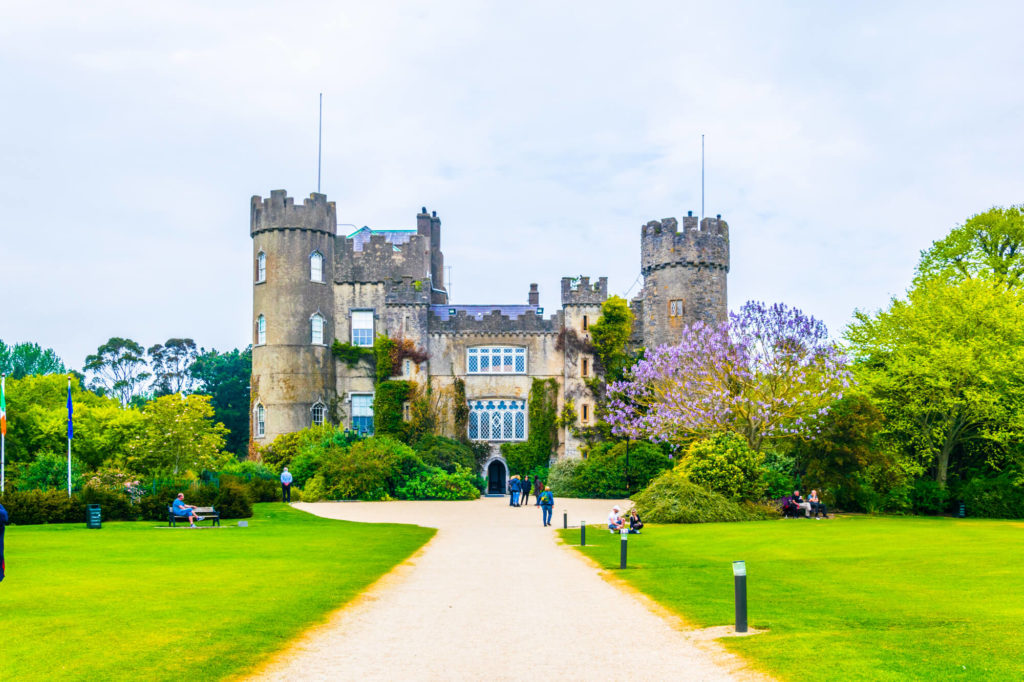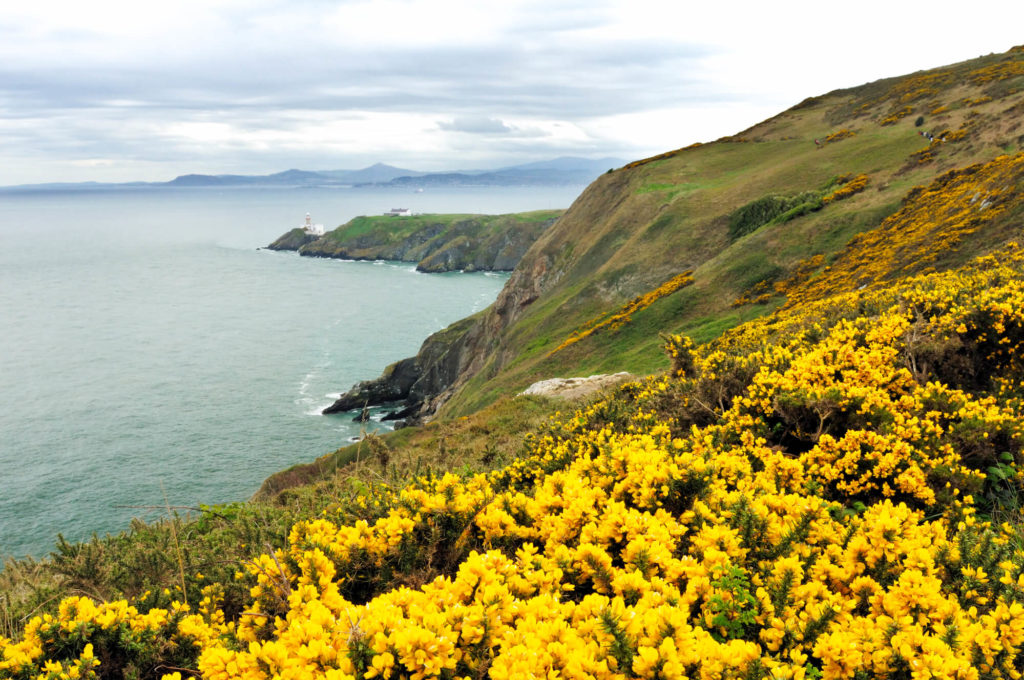04 Feb The Natural Charms of the Outskirts of Dublin
The capital of Ireland offers settings for all tastes. From urban life to the historic lanes of Temple Bar, Dublin is one of Europe’s oldest cities, built between high mountains and the sea. An infinite offer of activities, fun and historical itineraries that will leave you fascinated.
Located in a bay drawn by the mouth of the River Liffey, the Irish capital thrives with its legendary pubs, stylish shops, fine art galleries, lush urban parks, amazing natural sceneries, sophisticated architecture, and turbulent and fascinating history. A small but dynamic and welcoming capital where you can spend some fantastic days, among walks, pubs and good conversations.
Ireland’s beaches may not be the hottest, but nature has a way of attracting visitors all year round. These places reserve surprises for those who like to relax, hike, trail or play sports.
Here are some places to discover the natural charms of the outskirts of Dublin:
Portmarnock
Portmarnock is situated north of Dublin city, in Fingal County, approximately 29 kilometres from Dublin city centre. Portmarnock is a trendy beach for swimming, sunbathing and horseback riding. The five-mile-long beach stretches to Baldoyle and Malahide Beach. The location provides a beautiful view of the mountains of Dublin and Howth Harbour. On clear days, especially on weekends, you can see the yachts at sea. Along the beach, there is a path that leads up to Malahide and is used by many people. It is an excellent option for those who want to do exercises, walking, cycling, or even skating, enjoying a beach.
The golf course also makes Portmarnock known. This golf course was built around the old Jameson family home and formally opened on December 26, 1894.
Dún Laoghaire

A quick hike or a romantic walk are great options for anyone who wants inspiration or merely enjoy the incredible views or Dublin Bay and Dalkey Island. Every year, about 1.3 million people walk through the Dun Laoghaire pier, which is about 11 kilometres from Dublin city centre.
Historically Dún Laoghaire is a “Door to Ireland,” and it was once the seat of King Laoghaire, the former Great King of Ireland before the Vikings who sailed from Scandinavia and settled in Dublin.
Malahide

Malahide is part of Dublin County. Located 16 kilometres from the centre of the Irish capital, the region brings together natural beauty and history in a harmonious way. Malahide Castle is the main attraction. The gardens are inspiring for those who want to relax.
The castle area has 250 acres of parkland in the coastal village of Malahide, was a fortress and a private home with about 800 years. An interesting mix of architectural styles. The Talbot family lived here 1185-1973 when the last Talbot died. The house is decorated with period furniture, along with an extensive collection of Irish paintings.
Howth

The name Howth is of Nordic origin, derived from the Danish word Hoved (meaning “head”). The Danish Vikings colonized the eastern coasts of Ireland and built the city of Dublin as a key base between the Mediterranean and Scandinavia.
The place provides a hike on cliffs. With its incredible panoramic views, you can see to the north the mountains of Morne from County Down, to the south the green of the Wicklow Mountains and ahead to the city of Dublin and its bay.
Killiney
Killiney is a coastal village located south of Dublin city. Knowing the place, it is not difficult to understand why the Irish rich and famous made it their home. It is there that Bono; Enya and Van Morrison usually stay in Dublin. The area has been compared to that of the Bay of Naples. The beach is a great place to walk and relax. Killiney Hill Park is 170 meters above sea level at its highest point and an incredible landscape for those who want to be enchanted by the natural beauties of Ireland.



No Comments